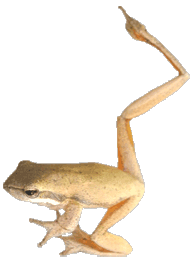At AllThingsNature, we're committed to delivering accurate, trustworthy information. Our expert-authored content is rigorously fact-checked and sourced from credible authorities. Discover how we uphold the highest standards in providing you with reliable knowledge.
What Is the Arizona Toad?
The Arizona toad, or anaxyrus microscaphus, is an amphibian native to the southwestern United States. It is found in Arizona, New Mexico, Utah, and Nevada. Arizona toads have one pale stripe across the head and are usually gray, green, or brown with smooth, warty skin and pale bellies. Coloration of this toad varies depending on the location, helping it to blend into its surroundings. The Arizona toad reaches a length of 2 to 3.25 inches (5 to 8.25 centimeters) at maturity, and the tadpoles are around 1.5 inches (3.8 centimeters) long.
These amphibians prefer water courses in rocky terrain and spend their lives near the water. They are found in canyons, freshwater marshes, and flood plains. The Arizona toad also frequents irrigated fields, washes, and watery ditches. It prefers spaces open to the sky without dense tree cover.

Arizona toads breed in slow-moving water and side pools. The males croak out a call to attract females. If there is no response, the male Arizona toad may snatch a female that goes by. Breeding can take place anytime between February and July, depending on the temperature and elevation.
Females lay clutches of approximately 3,000 to 4,000 eggs along the edges or bottoms of shallow pools and streams. Most eggs hatch successfully after around 3-6 days, and the young remain in the tadpole stage anywhere from 1 to 4 months. Almost 100% of the hatchlings survive and undergo metamorphosis.
The tadpoles subsist on a diet of plants, while the adult toads are mostly carnivorous and thrive on snails and insects that they catch by flicking out their long, sticky tongues. Tadpoles and young toads are more active during the day, and then become mostly nocturnal as adults. The toads commonly move by hopping, although they sometimes navigate with a slow walk or crawl. Adults generally spend the days underground, venturing out only to seek mates and breed.
Many children like to catch frogs and toads, but the Arizona toad is one amphibian that they should avoid handling. It has glands behind the eyes capable of excreting a poisonous fluid. When this poison touches the mucous membranes of the mouth, it can cause nausea, inflammation, irregular heartbeat, and can sometimes be fatal.
Although most Arizona toads survive metamorphosis, their numbers decrease afterward due to predation by birds, snakes, raccoons, and other small mammals. Habitat loss due to human development can also decrease a local population of the Arizona toad. There is no scarcity of this toad, however, and it doesn’t appear on any endangered species lists.
Frequently Asked Questions
What is the Arizona toad and where can it be found?
The Arizona toad (Anaxyrus microscaphus) is a small, native amphibian found primarily in the southwestern United States. It inhabits areas near permanent water sources like rivers, streams, and springs within Arizona, New Mexico, Nevada, Utah, and California. This toad prefers riparian zones with sandy or gravelly substrates for burrowing and laying eggs.
How can you identify an Arizona toad?
An Arizona toad can be identified by its size, typically reaching 2 to 3.3 inches in length, and its coloration, which ranges from gray to brown with a light stripe down its back. It has a rounded snout and dark spots with one or two warts per spot. During breeding season, males develop dark nuptial pads on their forelimbs.
What does the Arizona toad eat?
The Arizona toad's diet consists mainly of invertebrates, including insects like beetles, ants, and flies. It is a nocturnal feeder, using its sticky tongue to catch prey. The toad's feeding habits help control local insect populations, making it an important part of its ecosystem.
Is the Arizona toad endangered?
As of my knowledge cutoff in 2023, the Arizona toad is not listed as endangered but is considered vulnerable due to habitat loss, disease, and competition with non-native species. Conservation efforts focus on protecting water sources and surrounding habitats to ensure the survival of this species.
What is the breeding behavior of the Arizona toad?
Arizona toads breed between March and July, depending on local conditions. They gather in shallow waters where females lay eggs in long strings attached to vegetation. Tadpoles emerge after a few days and undergo metamorphosis within 6 to 8 weeks. The toads' distinctive mating call, a high-pitched trill, can be heard near breeding sites.
How does the Arizona toad adapt to its environment?
The Arizona toad has several adaptations for survival, including its burrowing behavior, which helps avoid extreme temperatures and predators. Its skin secretes toxins as a defense mechanism against predators. Additionally, the toad's cryptic coloration allows it to blend into its surroundings, making it less visible to both prey and predators.
AS FEATURED ON:
AS FEATURED ON:










Discuss this Article
Post your comments